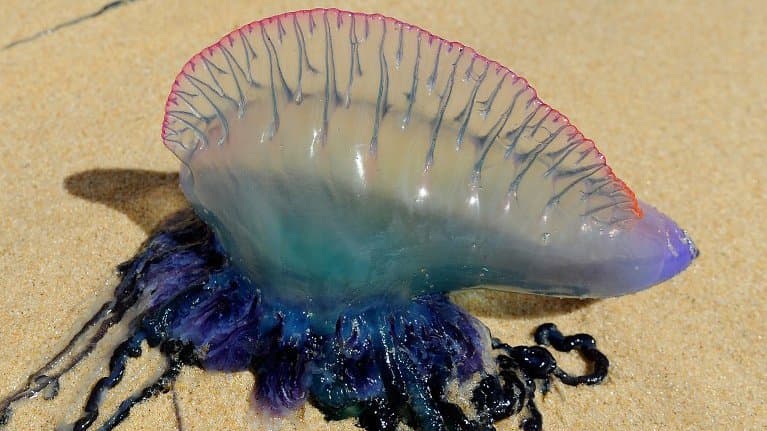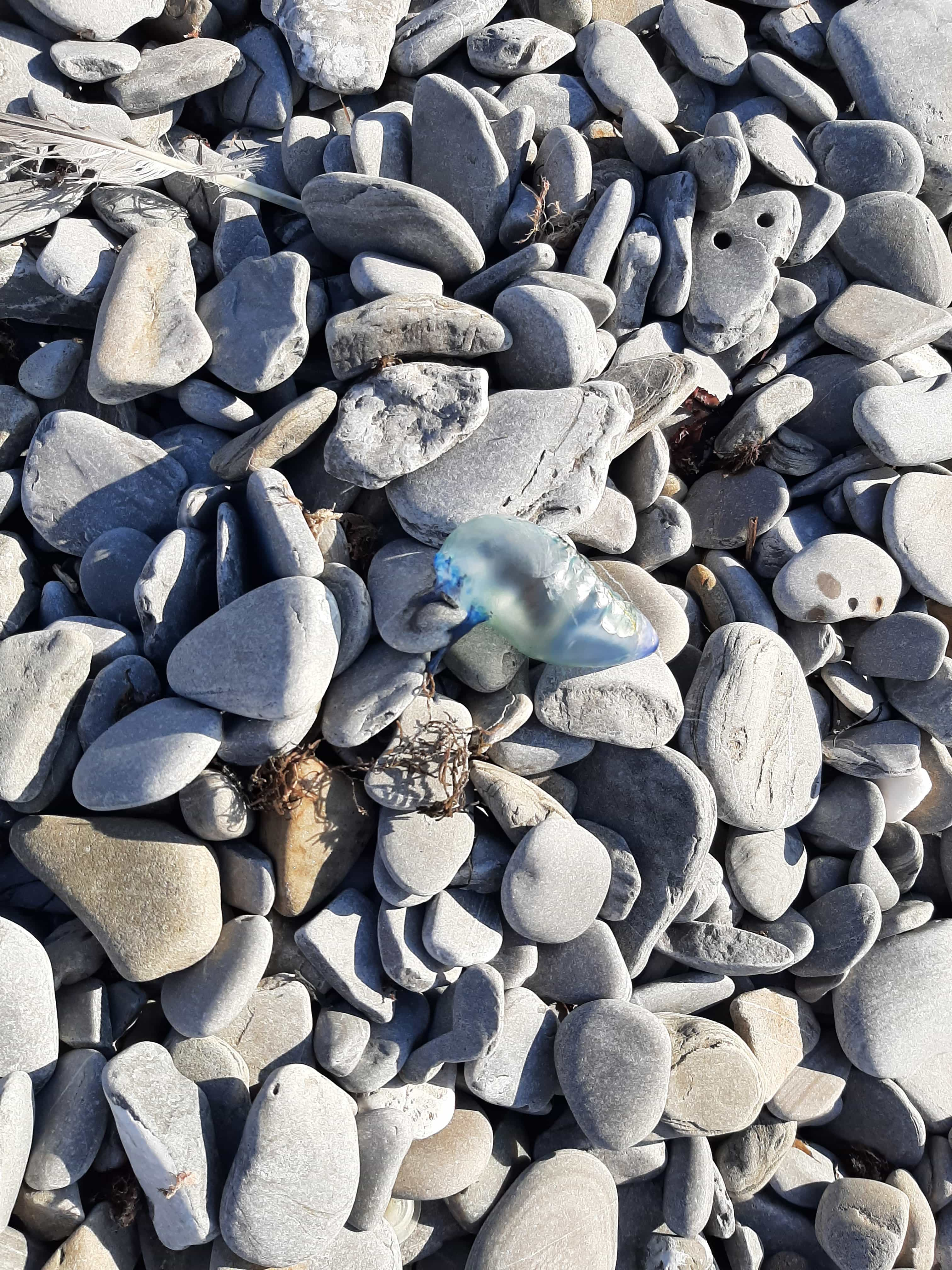Physalia physalis, sea bladder, Portuguese galley or Portugees oorlogschip is not a real jellyfish but a siphonophore, a kind of colony of polyps.
Siphonophores are distant cousins of jellyfish, sea anemones and corals, like them part of the cnidarians. Pelagic, they occupy both the abyss and the surface and generally practice net fishing thanks to two superpowers: a venom endowing them with stinging filaments and, more rarely, bioluminescence to attract their prey. The colonies, which can reach several tens of meters in length, are made up of several well-differentiated types of polyps.
Muskweeds usually live in tropical and subtropical seas but can be carried by winds over long distances. The presence of Physalia physalis is regularly reported on the south-west coasts of England and on the French coasts of Aquitaine.

Physalia physalis
 Physalia physalis. ©Susana Ruiz Goñi
Physalia physalis. ©Susana Ruiz Goñi
Dangerousness
It is an extremely stinging animal whose bite causes for swimmers a burning sensation, itching, relatively significant skin lesions.
Contact with a physalie causes immediate intense pain, welts of the skin and itching. Vesicles can form and the lesions sometimes leave pigmented scars (brown marks).
After fifteen minutes to one hour, general signs of varying severity may appear: nausea, vomiting, rapid pulse, pain in the chest and abdomen, breathing difficulties, muscle and joint pain, malaise, dizziness, fever .
